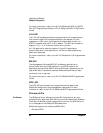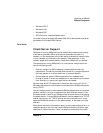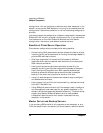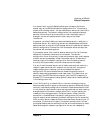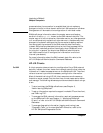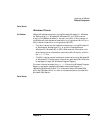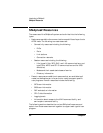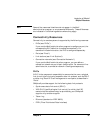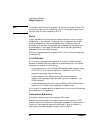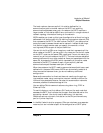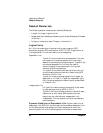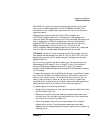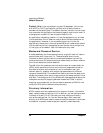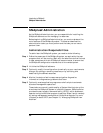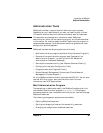
92 Chapter 2
Introduction to SNAplus2
SNAplus2 Resources
NOTE In the Motif administration program, DLCs are not shown directly. The
information required for configuring a DLC is displayed as part of the
configuration of a port owned by the DLC.
Ports
A port represents the local end of a communications link as a unique
access point in the network. In general, this corresponds to a single
physical access point such as an adapter card. However, some link
protocols (such as token ring) enable you to define multiple ports for a
single adapter; in this case, the different ports are distinguished by
addresses (such as the SAP address).
Each port is associated with a specific DLC. One or more ports can use
the same DLC.
Link Stations
A link station represents the logical path through the SNA network
between the SNAplus2 local node and a remote computer. The remote
computer can be any of the following:
• A host computer on which SNAplus2 accesses a host program using
3270, RJE, or LUA communications (or uses APPC or CPI-C for
program-to-program communications)
• A peer computer with SNAplus2 and the remote computer
communicating as equal partners (the typical arrangement in an
APPN network)
• A downstream computer that uses the SNAplus2 PU concentration
feature or DLUR feature as a gateway to access a host.
A link station is associated with a specific port. One or more link stations
can be defined on the same port.
Connection Networks
Connection networks cannot be used by LEN nodes.
Nodes that are connected to the same token ring, Ethernet, or FDDI
network have a direct communications path between all nodes, so that in
theory any two nodes can communicate directly. Such a network is
referred to as a shared-access transport facility (SATF).



